The Beech Leaf-Mining Weevil is an insect pest of Beech (Fagus spp.) trees. Adult weevils are 2–3 mm long, with short golden hair, and long back legs. They jump like fleas when foliage around them is disturbed. In their larval stage, they are about 5 mm long, with a shiny white body, and black head. Beech Leaf-Mining Weevils spend most of their life in the adult stage, even overwintering in this form under bark scales, or in surrounding leaf litter. In the spring, they eat and lay their eggs inside the new leaf growth of Beech trees.
Beech Leaf-Mining Weevils feed on Beech tree foliage. As larva, they feed from within the leaf, creating narrow mines which appear as small brown blotches from the midrib to the edge of the leaf. In early summer, invaded trees will appear defoliated or scorched. After several years of invasion, trees will decline and eventually die. As adults, Beech Leaf-Mining Weevils eat foliage emerging in the spring, peppering leaves with small holes.
Beech Leaf-Mining Weevil was first noted in Nova Scotia in Halifax and Cape Breton in 2011. Although its pathway from Europe is not definitively known, it is easily spread via transported firewood, logs, and infested host plants.
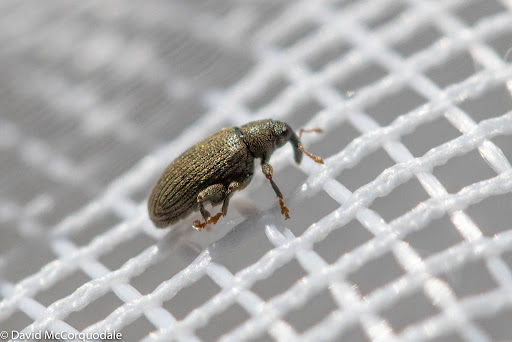
Long beetle with prominent snout, short golden hair, and long back legs. Jumps like a flea when disturbed.
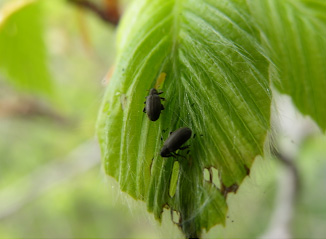
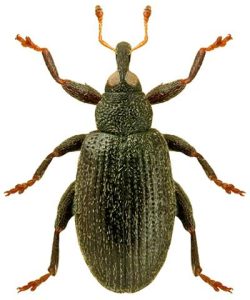
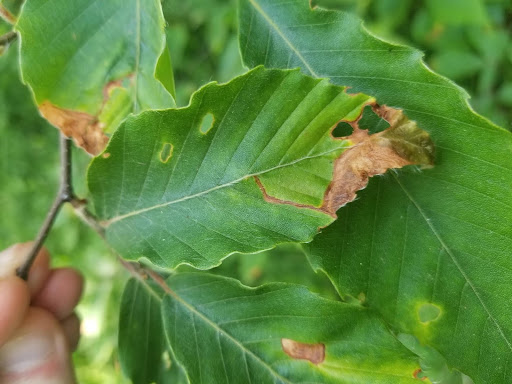
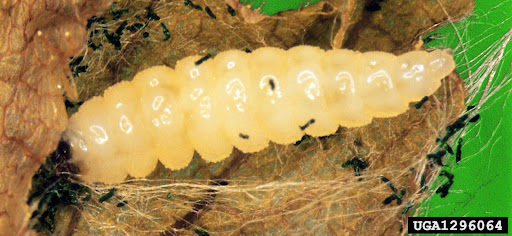
Beech Leaf-Mining Weevils are part of the Curculionidae family, which are also called “true weevils,” or “snout beetles” due to their common trait of having long snouts.
Avoid moving firewood long distances, since pests like Beech Leaf-Mining Weevil could be hiding underneath bark scales and between cracks. If you are going camping, buy and burn local firewood to prevent the spread of this invasive species and others. If you spot this invasive species, report the location to iNaturalist, or directly to the NSISC.
Join our mailing list.